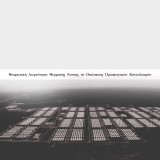Supervisor:
2018
House building is considered one of the most basic human rights. From the early years of human’s life, housing was necessary for people in order to grow up their children, work, and have a place that provides them security and privacy. Natural disasters (earthquake, floods, hurricanes, volcanic eruptions) and human interference (armed conflicts, fires, economic hardship) are two main reasons for forcing people to leave their homes, which are therefore pressing for the urgent need for temporary shelters or settlements as a disaster management plan.
In Greece, for example, dealing with such situations is at an early stage especially in the organization field. The emergency shelters used are mostly tents, and later the habitants are housed for several years in prefabricated units (decanting huts, pavilions), which are incomplete with flexibility and modification and do not always meet their needs.
The aim of this research is to study different types of shelters in Greece and the whole planet so that we can come up with a theoretical investigation of the thermal comfort of the settlements inhabited by the refugees in Greece. The question of our research is: does thermal comfort exist in shelters or not? In order to respond to this, we have put some variables and with the help of the program Design Builder we have prepared 18 scenarios (combinations). After that, we made a simulation for each scenario in our model for south and north orientation ending up with the conclusion that better versions of the shelters do exist in the refugee camps in order to achieve better thermal comfort.
